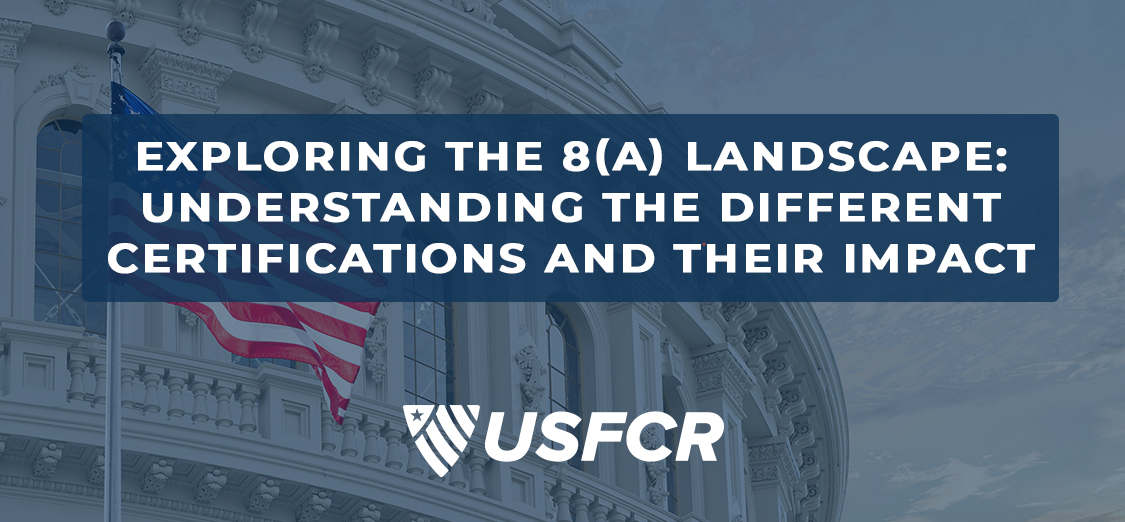Right now in 2025, the 8(a) Business Development Program, administered by the U.S. Small Business Administration (SBA), helps small, disadvantaged businesses access federal contracts. It provides set-aside and sole-source opportunities, business development support, and mentoring. Recent legal changes have affected eligibility requirements, making it more important than ever for businesses to understand how the program works.
Watch our expert explanation of 8(a) certification types and their strategic advantages:
The 8(a) Program's Market Impact in 2025
Record-breaking opportunity levels: In FY2024, Small Disadvantaged Businesses (which includes 8(a) participants) received a record $78.1 billion in federal contracting dollars, surpassing the previous year's $76.2 billion. This represents the largest opportunity pool ever available to disadvantaged business owners.
Strategic importance: The 8(a) program serves as the primary pathway for accessing Small Disadvantaged Business opportunities, making certification more valuable than ever. With over $78 billion in annual SDB spending, properly certified 8(a) participants are positioned to capture significant federal contracting opportunities.
Lifetime opportunity potential: Individual 8(a) participants can receive up to $168.5 million in combined competitive and sole-source 8(a) contract awards over their business lifetime, providing substantial growth potential for qualifying businesses.
General 8(a) Certification: The Foundation
The 8(a) certification: For small businesses that are at least 51% owned by socially and economically disadvantaged individuals. It provides access to exclusive federal contracts, business development resources, and joint venture opportunities. Businesses in the program also receive SBA support, including training, technical assistance, and mentorship.
Key benefits include:
- Access to set-aside and sole-source contracts from the $78+ billion annual SDB opportunity pool
- Sole-source contract limits: Up to $7 million for manufacturing and $4.5 million for other acquisitions
- Lifetime earning potential: Up to $168.5 million in total 8(a) contract awards
- Eligibility for joint ventures through the SBA Mentor-Protégé Program
- Nine-year program duration, divided into a four-year developmental stage and a five-year transition phase
Alaskan Native Corporations (ANC) 8(a) and Tribally-Owned 8(a)
This category applies to businesses at least 51% owned by Alaskan Native Corporations, Tribes, or individual Native Americans. These businesses receive special contracting privileges to support economic development in tribal communities.
Key benefits include:
- Higher sole-source contract caps beyond standard 8(a) limits
- No time limit on program participation
- Enhanced joint venture flexibility for large contract opportunities
Native Hawaiian Organizations (NHO) 8(a) and Community Development Corporations (CDC) 8(a)
These businesses are 51% owned by Native Hawaiian Organizations or Community Development Corporations. They focus on community-driven projects and federal contracting opportunities in Hawaii and other regions.
Key benefits include:
- Tailored contracting opportunities for Hawaii-based businesses
- Access to sole-source contracts and joint ventures
- Community development focus with specialized program support
Super 8(a) Certification: Expanded Opportunities for Native-Owned Businesses
The Super 8(a) category offers additional contracting advantages for Tribal, ANC, and NHO-owned firms. These businesses enjoy higher sole-source thresholds and greater flexibility in joint ventures.
Key benefits include:
- Exemptions from the nine-year program limit
- Higher sole-source contract thresholds beyond standard caps
- Flexibility in forming joint ventures for large contracts
The 8(a) Program's Nine-Year Development Journey
The 8(a) program follows a structured nine-year pathway designed to help businesses gain experience and transition into the competitive federal marketplace. The four-year developmental stage focuses on training, mentoring, and business growth. The five-year transition phase helps businesses prepare for success beyond the program.
Key Policy Changes Affecting 8(a) Eligibility
End of the "Presumption of Social Disadvantage"
In July 2023, a federal court ruling in Ultima Servs. Corp. v. Dep't of Ag. struck down the automatic presumption of social disadvantage for certain minority groups.
All 8(a) applicants must now submit a social disadvantage narrative proving they have faced specific instances of discrimination or barriers to business advancement.
Bona Fide Place of Business Requirement Status
As of October 1, 2025, the SBA's moratorium on the Bona Fide Place of Business (BFPOB) requirement has ended. 8(a) construction firms must now demonstrate they have a physical office presence in the location where contract work will be performed to be eligible for those opportunities.
Updates to Ownership and Control Regulations
In April 2023, the SBA revised its ownership and control rules to clarify:
- Affiliation rules for small businesses
- Eligibility for joint ventures between 8(a) and non-8(a) firms
- Participation guidelines for the SBA Mentor-Protégé Program
The 8(a) Program's Role in Small Business Success
Despite regulatory changes, the 8(a) Business Development Program remains an essential tool for small businesses. Its structured pathway, business support, and contract access make it a powerful resource for disadvantaged entrepreneurs seeking federal contracting success.
The program's integration with the broader Small Disadvantaged Business initiative ensures participants can access the full $78+ billion opportunity pool while receiving dedicated support for business development and competitive positioning.
Strategic Implementation Approach
Approach 8(a) certification as part of a comprehensive federal contracting strategy. The program's nine-year structure provides ample time to build capabilities, establish past performance, and develop the relationships necessary for sustained federal contracting success.
With over $78 billion in annual SDB opportunities and the potential for up to $168.5 million in lifetime 8(a) awards, proper program participation can transform qualifying businesses into major federal contractors.
Get Expert Guidance for Your 8(a) Application
If you're considering applying for 8(a) certification or need to reaffirm your eligibility under the new rules, USFCR can guide you through the updated process. Our team of federal contracting experts can help with:
- Navigating new social disadvantage requirements
- Ensuring SAM registration compliance
- Maximizing federal contracting opportunities
- Strategic positioning for the $78+ billion SDB opportunity pool
Speak to a USFCR Registration & Contracting Specialist to develop your 8(a) certification strategy and take advantage of the record-breaking federal contracting opportunities available to disadvantaged businesses.
FAQ View full FAQ page
Q: How long does 8(a) certification take? A: Once SBA determines your application is complete, they have 90 days to process the application and render a decision. Incomplete applications can extend this timeline significantly.
Q: Can I apply for 8(a) certification more than once? A: Generally no. Participation in the 8(a) program is one-time-only for firms and individuals, with the exception of entity-owned firms (ANCs, Tribes, NHOs, CDCs).
Q: Do I need a social disadvantage narrative for my application? A: Yes. Following the July 2023 court ruling, all 8(a) applicants must submit a social disadvantage narrative proving they have faced specific instances of discrimination or barriers.
Q: What's the difference between general 8(a) and entity-owned 8(a) programs? A: Entity-owned 8(a) firms (Tribal, ANC, NHO, CDC) have no time limits, higher sole-source thresholds, and greater flexibility in joint ventures compared to individually-owned 8(a) firms.
Q: Can I participate in other small business programs while in 8(a)? A: Yes. 8(a) participants are eligible to compete for contract awards under other socio-economic programs or small business set-asides they qualify for, maximizing their opportunity access.
Based on information current as of October 2025 from SBA.gov, Federal Procurement Data System reporting, and SBA 8(a) program regulations. Program requirements and spending levels may change - confirm current details with SBA or your contracting officer for specific opportunities.
To speak with a Registration and Contracting Specialist, Call (866) 216-5343
Top Articles
The 17 Most Common Types of Government Contracts Explained
Writing a Winning Capabilities Statement in 2025




